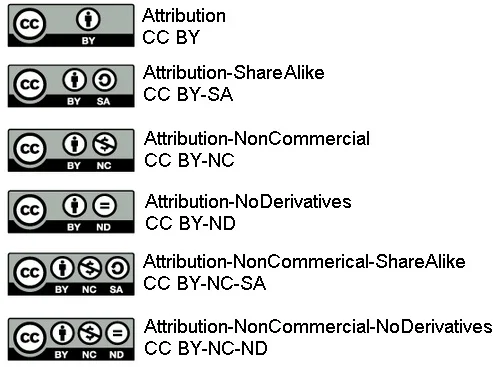Creative Commons licensing reflects the core values of the OER movement. Creative Commons allows creators to share their work and specify more flexible forms of copyright that allows "others to be able to copy, distribute, and make some uses of their works."
Look for copyright information (often at the bottom of webpages). Creative Commons licensed material sometimes display clickable icons that indicate the specifics of licensing.
Creative Commons licenses give everyone from individual creators to large institutions a standardized way to grant the public permission to use their creative work under copyright law.
The Different Types of CC Licenses

Multimedia content needs to be properly cited just like a book or article. It's also important to understand when it's okay to re-use multimedia content. The following examples give some guidance:
Sometimes a multimedia image is copyrighted, but re-use qualifies as Fair Use. The concept of fair use means that there are some kinds of uses that do not require permission or payment. Typically, a "four-factor test" is applied to determine if fair use can be claimed or not when using copyrighted content.
Four Factor Test: